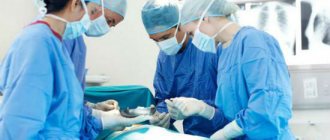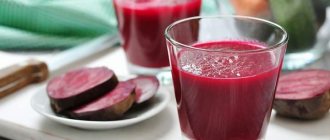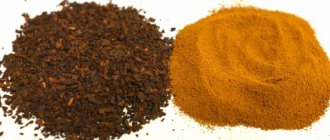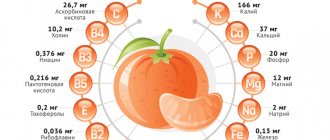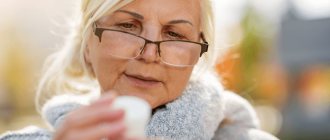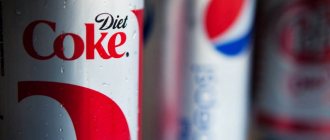In fact, we all need antioxidants to live active lives and feel good for many years to come. Women often take antioxidants to keep their skin firm and youthful, and rightly so. But these substances are also needed by the cells inside the body, where their work is not so noticeable, but is also very important. They protect the genetic material of eggs, cells of the immune system, and blood vessels... How do they do this, and why does the body need antioxidants? This is what we will talk about.
Free radicals and antioxidants
Antioxidants are our body’s protectors from free radicals. Free radicals are reactive molecules. They damage cells and their contents (including genetic material), disrupt natural processes (division, regeneration, energy production), and cause many unwanted changes in the body.
! For those who want to know more: Free radical activity is caused by the fact that they are missing one electron, an unstable state. Free radicals steal missing electrons from other molecules to fill the void. These reactions do not pass without a trace, such a damaged molecule can no longer fulfill its role in the body, and itself turns into a free radical, or, which also happens quite often, breaks up into two parts, each of which goes in search of the missing electron. The number of free radicals increases like an avalanche. If a free radical encounters molecules inside a cell, it disrupts them or the molecules that make up the cell wall. In the same way, free radicals act on blood cells and the walls of blood vessels, on all other organs and tissues.
Typically, free radicals are byproducts of oxygen oxidation in the body or are “produced” by the body specifically during inflammatory processes. The amount of free radicals in the body is controlled by the body's own antioxidants. An antioxidant, when it encounters a free radical, binds it and makes it inactive.
However, under the influence of factors such as environmental pollution, car exhaust, smoking, ultraviolet radiation, cosmetics with preservatives, contact with pesticides, free radicals are formed in huge quantities and the body’s own antioxidants are not enough to keep them under control. This has a negative impact on health. The reproductive system suffers especially severely, the functioning of many organs, as well as the endocrine and cardiovascular systems, deteriorates, the immune system suffers, and unwanted age-related changes develop.
Types of antioxidants
There are two types of antioxidants - those that the body produces itself (for example, coenzyme Q10), and those that we get from food. They are called endogenous (“born inside”) and exogenous (“born without”), respectively.
These substances may have different structures and belong to different classes of compounds. Their properties may have:
- minerals (selenium, zinc);
- some vitamins (C, E);
- some flavonoids (for example, rutin, catechin and others);
- carotenoids (lycopene and beta-carotene) and other substances.
Antioxidants and women's reproductive health
In some situations and conditions, a woman’s need for antioxidants increases or they are required to support a particular function and preserve women’s health.
Taking oral contraceptives
Oral contraceptives (COCs), or birth control pills as they are called, are hormones that not only prevent pregnancy, but also affect other processes. In particular, they suppress the synthesis of the body’s own antioxidants, change the blood clotting system, increase the load on the liver and damage it. Therefore, oral contraceptives, unfortunately, have side effects: bleeding, increased blood viscosity, deterioration of small vessels, darkening of the skin, chest pain. Taking antioxidants helps eliminate some of the side effects: vitamins A and E, rutin and vitamin C. Vitamin E, together with vitamin C and A, participate in the regulation of ovarian function, protect liver cells from damage when taking COCs, vitamin E normalizes blood viscosity, rutin with vitamin They prevent the appearance of spider veins and dark circles under the eyes. And what is very important, antioxidant support when taking birth control pills will help restore your cycle faster after stopping them.
Preparing for pregnancy and pregnancy after 35 years
After 35 years, the ovaries (and the entire reproductive system) begin to work less actively. The reserves of eggs are gradually depleted, and the hormonal balance also shifts towards “slowing down” the reproductive function. This means that the chances of pregnancy gradually decrease, although the woman can still become a mother. However, it is worth considering that the condition of the reproductive system and the entire body is somewhat worse than at twenty years old - previous diseases, unfavorable life factors, age-related changes, and the use of certain medications and contraceptives have an effect. Therefore, women over 35 years of age have a higher risk of pregnancy complications. In addition, the older the woman, the higher the risk of having a child with genetic abnormalities. This is due to the fact that the amount of damaged DNA in the ovaries increases with age.
But the rate at which women's reproductive systems begin to age can be changed with the help of antioxidants. They will protect the eggs from damage, help the body cope with the negative consequences of chronic diseases and bad habits, and thereby increase the chances of pregnancy, and during pregnancy they will reduce the risk of complications.
Mastopathy
Scientists have found that mastopathy is closely related to an increased amount of free radicals in the body. Therefore, for mastopathy, women are often prescribed antioxidants. The most effective in this case are coenzyme Q10, beta-carotene, lycopene, vitamins A and E. In addition to their direct effect, these substances enhance the therapeutic activity of other drugs, eliminate or weaken their side effects, stabilize the nervous system and strengthen the immune system. Antioxidants are taken both during treatment and for the prevention of mastopathy. So, if a woman is at risk for mastopathy (relatives with mastopathy, age over 35 years, late first birth, prolonged breastfeeding, abortion), then taking antioxidant drugs will reduce the risk of tumors in the breast.
Introduction
There are several thousand international nonproprietary names (INN) of active substances in the world. They are produced under tens of thousands of trade names (TN). At the same time, it is often difficult for both doctors and patients to navigate this sea of medications and understand which of them can be used and which are undesirable. Just 70 years ago there were very few guidelines, but today we can say that it is best to use drugs with proven effectiveness. Who has to prove what and to whom? Let's figure it out.
Antioxidant vitamins for women: types
Vitamins with a pronounced antioxidant effect include:
- Vitamin C. Protects capillaries and blood vessels, blood and immune system cells, as well as skin. Restores the normal course of biochemical reactions, especially those related to energy production. Together with rutin, it is needed by small vessels. Returns activity to vitamin E.
- Vitamin E. Particularly effective in protecting cell walls, skin, sex hormones and eggs from free radicals. Participates in the functioning of the blood coagulation system.
- Beta-carotene (provitamin A). It is converted into antioxidant vitamin A in the body or used independently. Beta-carotene has its own antioxidant activity, protects many body systems, including reproductive, and reduces the impact of harmful external factors (radiation, pollution) on the body.
Conclusion
Evidence-based medicine is a tool of a scientific approach in medicine. It involves the use of the best clinical data, refracted through the doctor’s personal experience, taking into account the patient’s expectations. Testing drugs using clinical studies conducted according to the canons of evidence-based medicine makes it possible to select drugs with proven effectiveness from the entire pool of drugs. Their use is as effective and rational as possible, therefore both doctors and patients should strive for the maximum proportion of such drugs in treatment regimens. References:
1. Sackett DL, Rosenberg WM, Gray JA, Haynes RB, Richardson WS (1996). Evidence based medicine: what it is and what it isn’t // BMJ. 312 (7023): 71–72. doi:10.1136/bmj.312.7023.71 2. Evidence-Based Medicine Working Group (November 1992). Evidence-based medicine. A new approach to teaching the practice of medicine // JAMA. 268(17):2420–25. CiteSeerX 10.1.1.684.3783. doi:10.1001/JAMA.1992.03490170092032 3. Poisson, Dulong; Larry, Double (2001) [1835]. Statistical research on conditions caused by calculi by Doctor Civiale // Int J Epidemiol. 30(6):1246–49. doi:10.1093/ije/30.6.1246 4. Sackett, Dave (2006). Haynes, R. Brian (ed.). Clinical Epidemiology: How to Do Clinical Practice Research. Lippincott Williams & Wilkins. ISBN 978-0-7817-4524-6. 5. Doi, S. A. R. (2012). Understanding Evidence in Health Care: Using Clinical Epidemiology. South Yarra, VIC, Australia: Palgrave Macmillan. ISBN 978-1-4202-5669-7 6. Greenhalgh, Trisha (2010). How to Read a Paper: The Basics of Evidence-Based Medicine (4th ed.). John Wiley & Sons. p. 1. ISBN 978-1-4443-9036-0. 7. Ilic, D; Maloney, S (February 2014). Methods of teaching medical trainees evidence-based medicine: a systematic review // Medical Education. 48 (2): 124–35. doi:10.1111/medu.12288 8. Krauss, Alexander (2018). Why all randomized controlled trials produce biased results // Annals of Medicine. 50 (4): 312–322. doi:10.1080/07853890.2018.1453233 9. Kelly, M; Heath, I; Howick, J; Greenhalgh, T (2015). The importance of values in evidence-based medicine // BMC Medical Ethics. 16 (69): 69. doi:10.1186/s12910-015-0063-3 10. Matthew S. Thiese. (2014). Observational and interventional study design types; an overview // Biochem Med. 24, 199-210 11. Machin D. and Fayers PM Randomized clinical trials: design, practice and reporting. John Wiley & Sons, 2010. - 374 p 12. Laura E. Bothwell, Scott H. Podolsky. (2016). The Emergence of the Randomized, Controlled Trial // N Engl J Med. 375, 501-504 13. Rukavishnikov M.V. (2008). Legal regulation of biomedical research involving human subjects. Gaps in Russian legislation // Legal Journal. 2, 453–454 14. Federal Law of April 12, 2010 No. 61-FZ (as amended on December 28, 2017) “On the circulation of medicines.” Article 43. Rights of patients participating in a clinical trial of a medicinal product for medical use 15. Federal Law of April 12, 2010 No. 61-FZ (as amended on December 28, 2017) “On the Circulation of Medicines.” Article 39. Decision to conduct a clinical trial of a medicinal product for medical use; 16. Order of the Ministry of Health and Social Development of the Russian Federation (Ministry of Health and Social Development of Russia) dated August 26, 2010 N 753n Moscow “On approval of the procedure for organizing and conducting an ethical examination of the possibility of conducting a clinical trial of a medicinal product for medical use and the form of the conclusion of the ethics council” . (2010). “Rossiyskaya Gazeta” 17. Fundamentals of evidence-based medicine / Ed. Academician of the Russian Academy of Medical Sciences, Professor R.G. Oganov. Tutorial. M.: “Silicea-Poligraph”, 2010. - 136 p. 18. Decree of the Government of the Russian Federation of August 28, 2014 No. 871 “On approval of the rules for the formation of lists of drugs for medical use and the minimum range of drugs necessary for the provision of medical care » 19. Kosarev V.V., Babanov S.A. Clinical pharmacology of modern nootropics and their place in the treatment of kinetosis (sickness). Medical advice. 2013;(2-2):66-71. DOI: 10.21518/2079-701X-2013-2-2-66-71 20. Prospects for the use of methylmethionine (vitamin U) as a gastroprotector Conversation with Doctor of Medical Sciences, Professor Evgenia Valerievna Shikh. Medical advice. 2019;(14):7-8. DOI: 10.21518/2079-701X-2019-14-7-8 21. Ovchinnikov R.I., Popova A.Yu., Gamidov S.I., Kvasov A.V. Antioxidant therapy is the key to treating idiopathic male infertility. Medical advice. 2017;(20):177-181. DOI: 10.21518/2079-701X-2017-20-177-181 22. Minushkin O.N. Hepatoprotectors in the treatment of certain liver diseases. Medical advice. 2016;(14):52-57. DOI: 10.21518/2079-701X-2016-14-52-57
How to get antioxidants?
Antioxidants are found primarily in fruits and vegetables. The leaders in the content of these substances are cranberries, blueberries, blackberries, artichokes and pinto beans (red variegated). For example, orange and red fruits contain a lot of beta-carotene and other carotenoids. Tea, nuts, seeds and seaweed are rich in antioxidants.
Antioxidants are sensitive to heat, long-term storage and are damaged during cooking and processing of foods. Therefore, only fresh seasonal fruits and vegetables are the source of these substances.
In addition, it is worth remembering that the content of antioxidants in a particular plant strongly depends not only on storage, but also on growing conditions, variety, and degree of ripeness. So it's really impossible to assess whether the diet contains enough antioxidants, even if a woman eats the proverbial "5 green servings" per day. Therefore, it is wiser to take antioxidant complexes to provide the body with these substances.
Antioxidant complexes
When choosing an antioxidant complex for women, first of all, pay attention not only to what substances are included in the complex, but also to their quantity. If you live in a large industrial city or area with an unfavorable environmental situation, are over 35 years old, suffer from mastopathy or chronic diseases, or take hormonal contraceptives, then your need for antioxidants is increased.
Pay attention to the Synergin antioxidant complex. It contains 6 natural antioxidants in high dosages: ascorbic acid, rutin, vitamin E, coenzyme Q10 and beta-carotene. These substances act synergistically, that is, together they work more effectively than separately. It is important that Synergin contains both water-soluble and lipophilic antioxidants. This allows you to protect all cells, tissues and environments (blood, intercellular fluid) of the body.
THIS IS NOT AN ADVERTISING. THE MATERIAL WAS PREPARED WITH THE PARTICIPATION OF EXPERTS.
Content
Introduction
- Evidence-based medicine and clinical research
- The effectiveness of the drug and its advertising
- How to check drugs for proven effectiveness?
- Hepatoprotectors with proven effectiveness
- Antioxidants with proven effectiveness
- Gastroprotectors with proven effectiveness
- Nootropic drugs with proven effectiveness
- List of antiviral drugs with proven effectiveness
- Conclusion

